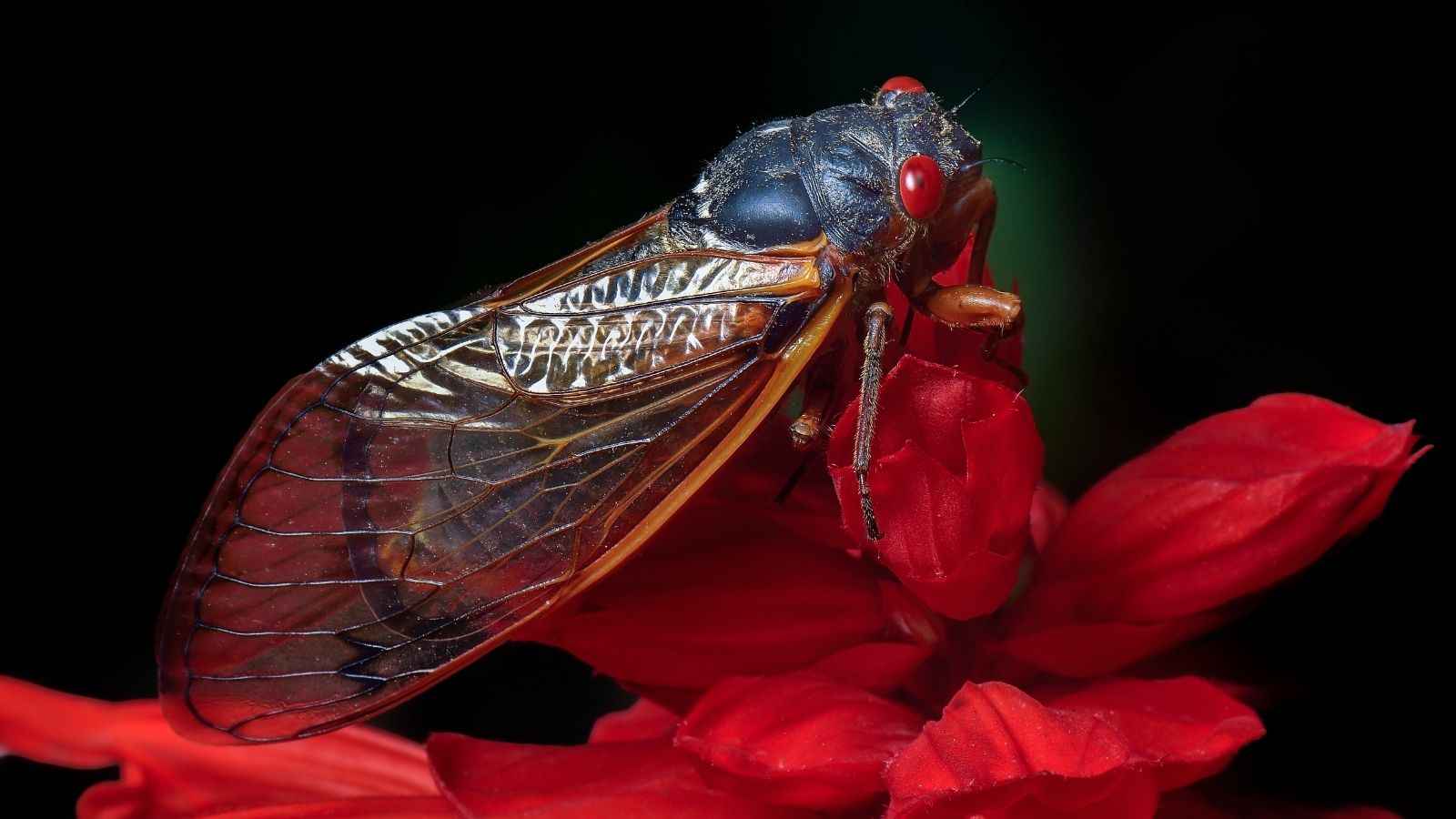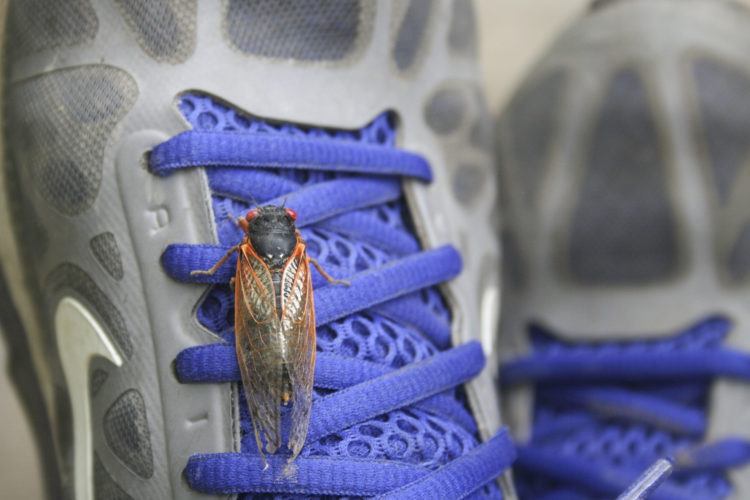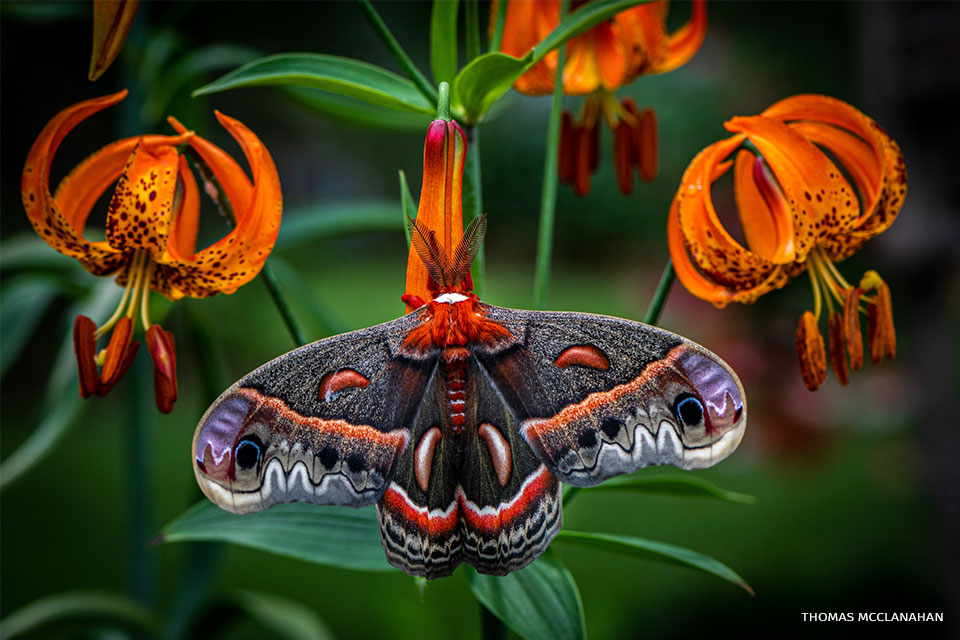We have much more to do and your continued support is needed now more than ever.
Return of Brood X Cicadas

A Short Celebration in the Sun
Americans are about to experience a rare phenomenon for the first time in 17 years: the return of Brood X periodical cicadas! Last seen in 2004, this brood of cicadas will emerge from underground by the millions this May across parts of the Mid-Atlantic, Midwest and Southeast. During their short time above ground, they’ll offer a rare chance for people to observe this unique natural phenomenon.
Cicadas are members of Hemiptera, or “true bugs,” a group of insects compromising around 80,000 species characterized by sucking mouthparts. Of the 3,000 cicada species, most have an annual lifecycle, hatching from eggs laid in tree branches then dropping to the ground and burrowing into the soil where they spend a year or so as nymphs feeding on fluids from tree roots, then emerging as adults to mate, lay eggs and die.
But there are seven species, all native to the eastern and central United States, that stand apart from their annual relatives with their extended nymph phase, long lifespan and synchronicitous emergence in the millions.

Four of these periodical cicada species emerge as adults after 13 years and three of them emerge after 17 years. Collectively they make up 15 regional broods, so in most years, some periodical cicadas are emerging somewhere, along with their annual cicada cousins.
For the last 17 years, the periodical cicadas in Brood X have been burrowing underground feeding on juices from tree roots. Now, after spending almost two decades developing in the dark, all of Brood X will tunnel upwards to begin a short celebration in the sun in parts of multiple states.
Fact vs. Fiction
Although it may be overwhelming to know you might soon be seeing millions of large insects emerge en masse from the ground where you live, this event is nothing to be afraid of. Cicadas don’t bite or sting and have no attraction to humans or our pets. Though the males can create quite a cacophony with their loud buzzing mating calls, it’s only temporary.
Get the buzz on cicadas from National Wildlife Federation Naturalist David Mizejewski.
In the case of plants, large concentrations of cicadas can cause some cosmetic damage to trees, but the common misconception that they will kill off trees, shrubs, and flowers isn’t true.
Unlike some other insects, cicadas don’t damage trees by feeding on their leaves or burrowing into the wood. Rather, any damage they might cause in the home landscape comes from laying their eggs under the bark of tree branches. In some cases where there are massive numbers of cicadas as in emergence years, new growth or weaker branches might die back–but a healthy tree will survive, albeit with some possible need for pruning off any dead parts after the cicada surge. Shrubs are generally too small to host cicadas and herbaceous plants are ignored by the insects.
Any potential tree damage caused by these cicadas is far outweighed by their value to the ecosystem. They aerate the soil, serve as food for predators both above and below ground and act as a fertilizer once they die.
No Need to Bug Out
The best way to go about the return of Brood X is to simply let nature take its course and enjoy being a part of such a rare natural phenomenon. If you are concerned about possible damage to their yard, here are some sustainable steps you can take to protect your plants:
- Cover small trees with mesh netting or insect exclusion screens. Just make sure the netting allows sun and precipitation to reach your plant.
- Don’t spray pesticides! There’s no need to and spraying would be totally ineffective against so many cicadas anyway, although other non-target insects such as bees and butterflies could be killed.
- Handpick them off your trees. Cicadas don’t bite or sting so it’s completely safe to pluck them off your plants yourself. You can invite the kids outside and put them to work removing the cicadas too.
- Use the cicadas as fishing bait. They make tasty prey to everything that swims, so If you enjoy fishing, save some cicadas to use as bait on your next trip!
- Eat the cicadas yourself! If you’re about to have lots of bite-sized snacks in your yard, make the most of them. They can be boiled, fried, or even eaten raw if you’re in a hurry. They’re low in fat and carbs, have a ton of protein, and are gluten-free. Just be sure to pull the wings off so they don’t get stuck in your teeth! (Get some recipes from Bon Appetit here.)






















